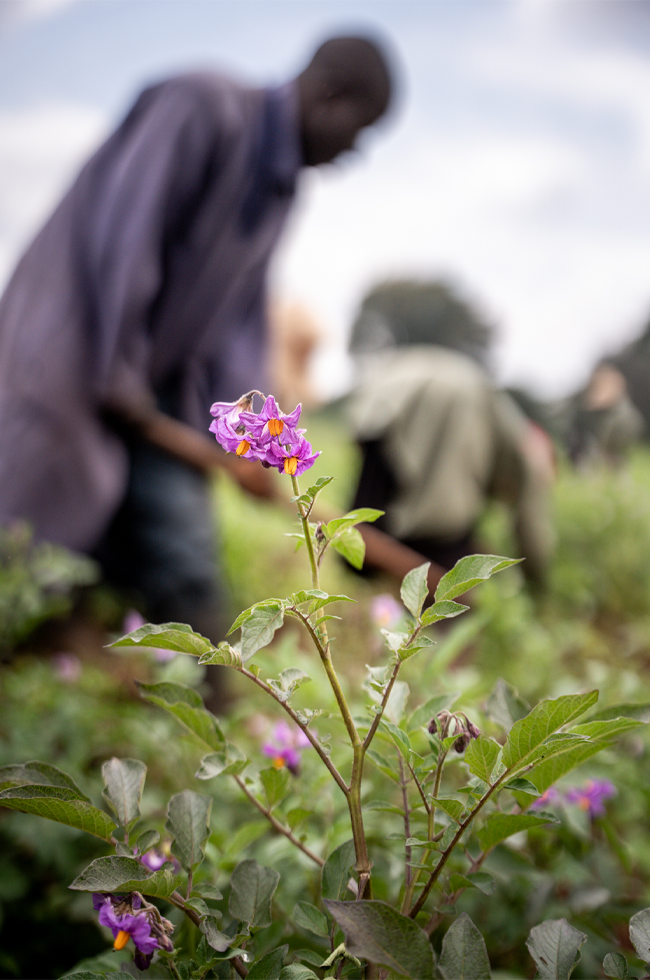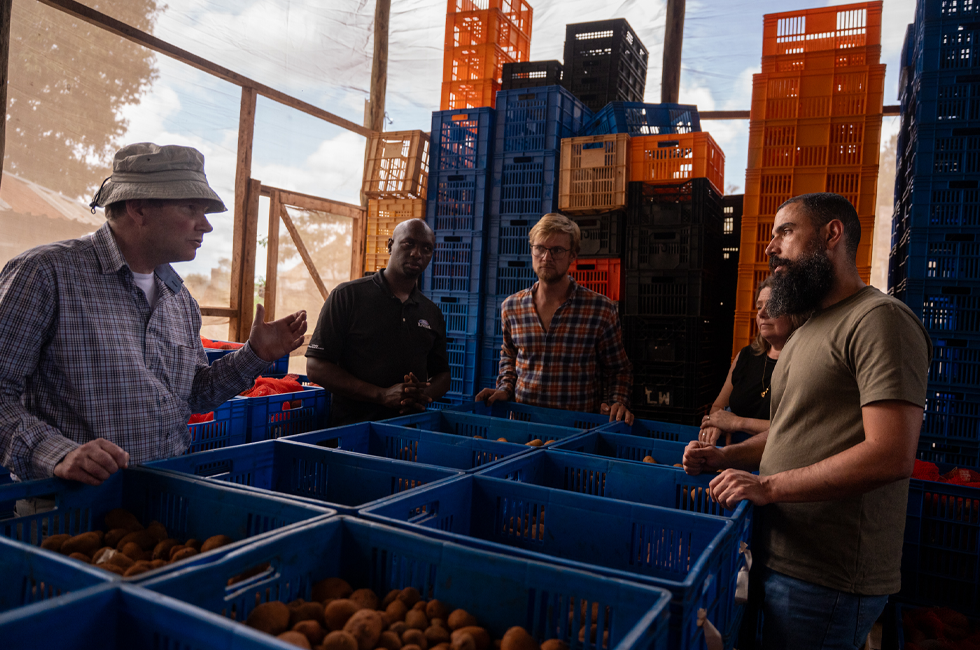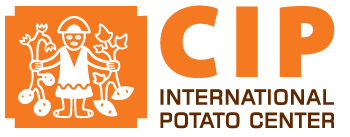 Potatoes hold enormous potential in eastern Africa. Yet yields are collapsing. A new hybrid breeding initiative led by the International Potato Center (CIP) and Dutch seed company HZPC aims to reverse this trend and transform how potatoes are bred and grown across the continent. The project, called One-to-One, marks a significant step toward more accessible, resilient potato seed systems.
Potatoes hold enormous potential in eastern Africa. Yet yields are collapsing. A new hybrid breeding initiative led by the International Potato Center (CIP) and Dutch seed company HZPC aims to reverse this trend and transform how potatoes are bred and grown across the continent. The project, called One-to-One, marks a significant step toward more accessible, resilient potato seed systems.
As Kenya’s second most important staple crop, potatoes employ around two million people and contribute more than half a billion U.S. dollars to the economy annually. But the sector is in crisis. Yields have dropped by two-thirds in the past six years, from 21 to just seven tons per hectare. One of the main culprits? The chronic lack of quality seed.
“For farmers, this is not just a crisis but a chance to rethink potato breeding,” say Thiago Mendes of CIP and Harmen den Braber of HZPC. Together, they are launching Africa’s largest hybrid potato breeding project in Kenya. The goal is to develop inbred lines from CIP’s rich genetic pool and cross them with HZPC’s commercial lines to create vigorous, climate-resilient hybrids adapted to African conditions. “We want potatoes to reach more farmers in more regions,” says den Braber. “By accelerating breeding and tackling disease and climate threats, we can make high-quality seed more affordable and widely available.”
Access to clean, certified seed is perhaps the biggest bottleneck in potato farming. In Kenya, fewer than five percent of farmers use certified seed. The vast majority rely on recycled seed — potatoes saved from previous harvests and replanted over multiple seasons. This practice, often repeated for five to 10 generations, leads to serious degeneration. Pests and diseases like nematodes, late blight and bacterial wilt accumulate, with yield losses of 30 to 60 percent common.
Certified seed, while cleaner, costs three to five times more than farmer-saved seed and is often hard to find. Transport is expensive, storage is bulky, and formal seed systems barely reach remote areas. “The economics simply do not work for most smallholders,” says Mendes.
That is where hybrid breeding and true potato seed (TPS) come in. Unlike conventional potatoes, which are propagated by planting tubers, hybrids can be grown from botanical seeds — lightweight, disease-free, and inexpensive to move. TPS, similar in size to tomato seed, could radically cut distribution costs and bring clean planting material to places previously out of reach. “In East Africa, where seed systems cannot keep up with demand, TPS would be a game-changer,” says den Braber.
But hybrid breeding is challenging. For decades, potato breeding has focused on cloning tubers — a simple system where each generation is genetically identical. Hybrid breeding is a different process. It involves selecting and stabilizing parent lines, managing complex genetics, and producing seed that outperforms both parents. It is technically feasible but demands investment in infrastructure, time, and specialized expertise.
This is where the CIP-HZPC partnership stands out. CIP brings deep scientific expertise and the world’s largest collection of potato diversity, including traits for heat and pest resistance. HZPC, meanwhile, is one of Europe’s largest commercial potato breeders, with a sharp focus on market needs and processing qualities. “Having access to these two diverse gene pools,” says Mendes, “increases the chances of achieving hybrid vigor when offspring outperform their parents.”

Equally important is the mix of public and private networks. HZPC is the first major private seed company to invest in large-scale potato breeding for Africa. CIP brings decades of partnerships with governments, research bodies, and farmers across the region.
So far, private companies have been hesitant to invest in potato breeding for eastern Africa. Development has largely been left to underfunded public institutions. “That needs to change,” says Mendes. “We want this to be impactful at scale. Having HZPC on board ensures there is a business case right from the start.”
While results will not come overnight, HZPC is confident in the long-term gains. “Of course we hope to see progress within five years,” says den Braber. “But even if it takes longer, the payoff will far outweigh the upfront cost.”
Crucially, all inbred lines developed through the One-to-One project will remain public goods — freely available to national breeding programs. That openness, combined with a serious private sector push, could unlock faster innovation and better seed for farmers across the region.
In the long run, the initiative may do more than improve yields. It could reposition eastern Africa as a hub for cutting-edge potato breeding. And for farmers, that means not just more potatoes, but better ones.
